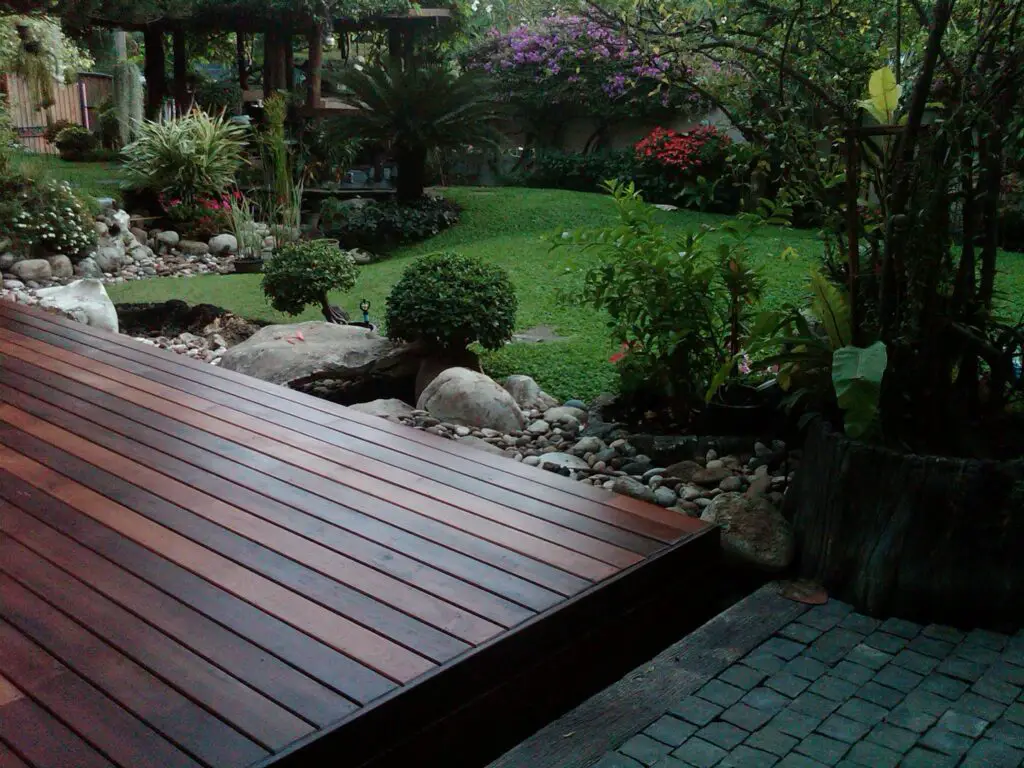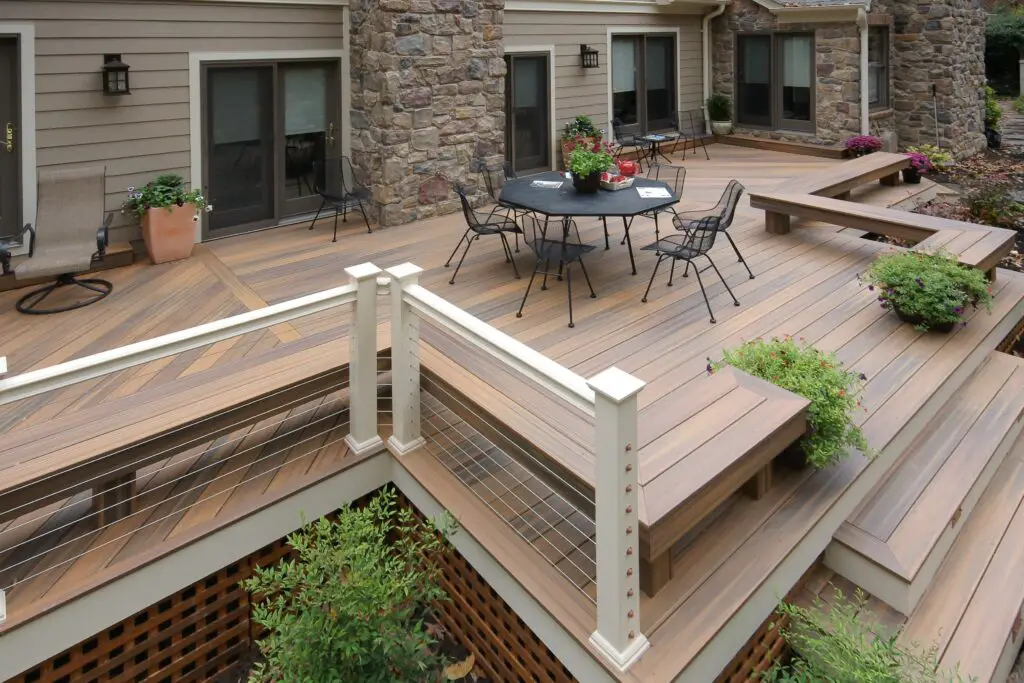How To Raise Ground Level For Patio
Introduction
How To Raise Ground Level For Patio: One of the most important steps in building a patio is ensuring that the ground level is properly prepared. Whether you have uneven ground or want to raise the level of your patio for better drainage, this article will guide you through the process of raising the ground level for your patio.
Raising the ground level for your patio is essential for several reasons. Firstly, it helps to create a level surface for your patio, ensuring that it is safe and stable. Uneven ground can lead to tripping hazards and an unstable foundation for your patio house. Secondly, raising the ground level can improve the drainage of your patio. If your patio is located in an area that is prone to flooding or water pooling, raising the ground level can help to redirect water away from your patio, preventing water damage and prolonging the lifespan of your patio.
There are several methods you can use to raise the ground level for your patio. One common method is to use compacted gravel or crushed stone as a base. This provides a stable foundation and allows for proper drainage. Another option is to use retaining walls or raised beds to create a higher level for your patio. This can add visual interest to your patio and create defined spaces for seating or planting. Additionally, you can consider using fill dirt or topsoil to raise the ground level. This method is ideal for areas with significant unevenness or if you want to create a gradual slope for your patio.

How do I raise my patio level?
Raising the level of your patio can be a great way to improve its appearance and functionality. Whether you want to create a more even surface, add additional seating or dining space, or simply enhance the overall aesthetic of your outdoor area, raising your patio level can help you achieve your goals. There are several methods you can use to raise your patio level, depending on your specific needs and preferences.
One common method for raising a patio level is to use concrete pavers or bricks. This involves removing the existing patio surface and adding a layer of compacted gravel or sand as a base. The pavers or bricks are then laid on top of the base, creating a new, elevated surface. This method allows for easy customization, as you can choose from a variety of paver or brick styles and colors to create the look you desire.
If you prefer a more natural look, you may consider using stone or flagstone to raise your patio level. Stone is a durable and attractive option that can add a rustic or elegant touch to your outdoor space. Like the paver method, this approach involves removing the existing patio surface and adding a layer of compacted gravel or sand as a base. The stone or flagstone is then laid on top of the base, creating a raised patio surface that blends seamlessly with the surrounding landscape.
Another option for raising your patio level is to use a raised deck or platform. This method involves building a wooden or composite deck on top of the existing patio surface. The deck can be elevated to the desired height, providing a level and stable surface for outdoor seating, dining, or entertaining.
How do you level ground before a patio?
Leveling the ground before building a patio is an essential step to ensure a stable and long-lasting structure. Whether you are planning to construct a concrete, stone, or brick patio, the ground must be properly prepared to provide a solid foundation. There are several steps involved in leveling the ground before a patio, and each one plays a crucial role in creating a flat and even surface.
Firstly, it is important to clear the area where the patio will be built. This involves removing any existing vegetation, rocks, or debris that may be present. It is also necessary to mark the boundaries of the patio to ensure that the area is properly defined.
Next, the soil needs to be excavated to a certain depth to create a level surface. The depth of excavation will depend on the type of patio being built and the specific requirements of the project. It is important to remove any excess soil and create a uniform depth throughout the entire area.
Once the soil has been excavated, it is time to compact the ground. This can be done using a plate compactor or a hand tamper. The goal is to compress the soil and remove any air pockets, which will help prevent settling and ensure a stable base for the patio.
How to build a raised patio base?
Building a raised patio base can be a great way to add some extra outdoor living space to your home. Whether you want to create a cozy seating area or a place for outdoor dining, a raised patio can provide a beautiful and functional addition to your backyard. However, building a raised patio base requires careful planning and execution to ensure that it is stable and long-lasting.
Firstly, you need to determine the location and size of your raised patio. Consider factors such as the amount of sunlight the area receives, the proximity to your home, and any existing landscaping features that you want to incorporate into your design. Once you have chosen a location, mark out the area using stakes and string to create a clear outline.
Next, you will need to prepare the ground for your raised patio base. This involves removing any existing vegetation and leveling the area. Use a shovel or a rototiller to remove the top layer of soil and create a level surface. It is important to ensure that the ground is compacted and stable to prevent any sinking or shifting of your patio base.
Once the ground is prepared, you can begin building the base for your raised patio. Start by laying a layer of landscape fabric over the entire area to prevent weeds from growing through your patio. Next, add a layer of gravel or crushed stone to create a stable and well-draining base. Use a tamper or a plate compactor to compact the gravel and create a solid foundation.
How do you level a slope for a patio?
Leveling a slope for a patio is an important step in ensuring that your patio is stable and safe. A sloping patio can cause water to pool in certain areas, leading to potential damage and instability. Additionally, a sloping patio can be visually unappealing and make it difficult to use the space effectively. Fortunately, there are several methods you can use to level a slope for a patio.
One method for leveling a slope for a patio is to use a retaining wall. A retaining wall is a structure that is built to hold back soil and create a level surface. To level a slope for a patio using a retaining wall, you will first need to determine the height and length of the wall needed. This will depend on the slope of the area and the desired level of the patio. Once you have determined the dimensions of the retaining wall, you can begin the construction process. This typically involves digging a trench, installing the wall materials, and backfilling the area behind the wall to create a level surface.
Another method for leveling a slope for a patio is to use a grading technique. Grading involves reshaping the existing soil to create a level surface. This method is typically used for smaller slopes or areas where a retaining wall is not necessary. To level a slope for a patio using grading, you will first need to remove any existing vegetation or debris from the area. Then, you can use a shovel or grading rake to redistribute the soil and create a level surface. It may be necessary to add or remove soil in certain areas to achieve the desired level.
Does patio need to be level with ground?
Whether a patio should be level is a major concern when designing one. This depends on the patio’s design, purpose, and landscape slope.
Most patios should be level for drainage and stability. Rainwater flows off a level patio, preventing pooling and patio material damage. A level patio offers a more even walking and furniture surface, making it more comfortable and useful for daily usage.
However, a level patio may not always be essential or practicable. Stepped or terraced patios may be cheaper and easier to build on sloped or uneven surfaces. This can make the patio seem nice and reduce excavation and grading.
There are numerous ways to raise patio ground levels, based on the intended result and conditions.
Are there any specific materials or tools needed to raise the ground level for a patio?
When raising the ground level for a patio, there are several materials and tools that are typically needed to ensure a successful project. One important material is fill dirt or topsoil, which is used to build up the ground level. This can be purchased from a local landscaping supply store or delivered in bulk. Additionally, you may need gravel or crushed stone to create a stable base for the patio.
In terms of tools, a shovel or excavator is essential for digging and moving the dirt. A wheelbarrow or dump truck can be useful for transporting the fill dirt or topsoil to the desired location. A tamper or plate compactor is also necessary to compact the soil and create a solid foundation for the patio. Depending on the specific project, you may also need a level, string line, and stakes to ensure the ground is properly leveled.
How long does it typically take to raise the ground level for a patio?
Raising the ground level for a patio can vary in terms of time depending on several factors. The size of the patio, the desired height of the raised ground, and the complexity of the project can all impact the duration of the process. In general, however, it can take anywhere from a few days to a few weeks to complete the task.
One of the main factors that can affect the time it takes to raise the ground level for a patio is the amount of excavation required. If a significant amount of soil needs to be removed or added, it can add to the overall duration of the project. Additionally, the type of materials being used to raise the ground level can also impact the time frame. For example, if concrete or stone pavers are being used, it may take longer to install and set them compared to using gravel or sand.
Are there any potential challenges or obstacles to consider when raising the ground level for a patio?
Restoring a polypropylene chair is a cheap and easy method to update old furniture. Polypropylene chairs are popular for indoor and outdoor use due to its durability and wear resistance. These chairs might fade, discolor, or degrade over time, requiring maintenance to restore them.
Restoring a polypropylene chair begins with a thorough cleaning. Use mild detergent and warm water. Dirt, grime, and stains on the chair must be removed. Scrub the chair gently with a gentle brush or sponge to avoid damaging the material. Before continuing, rinse the chair with clean water and let it dry.
Use a heat gun or hairdryer to fix chair scratches and scuffs. Heat from these instruments softens polypropylene, allowing it to be molded and smoothed. Overheating can deform or melt the material, so apply heat evenly. After repairing scratches and scuff marks, lightly sand the chair to smooth out any irregularities.
Are there any specific safety precautions that should be taken when raising the ground level for a patio?
When raising the ground level for a patio, it is important to prioritize safety to prevent any accidents or injuries. Here are some specific safety precautions that should be taken:
1. Wear protective gear: Before starting any construction work, make sure to wear appropriate protective gear such as gloves, safety glasses, and sturdy footwear. This will help protect you from any potential hazards or injuries.
2. Use proper lifting techniques: When lifting heavy materials or equipment, it is important to use proper lifting techniques to avoid straining your back or causing muscle injuries. Bend your knees, keep your back straight, and lift with your legs to minimize the risk of injury.
3. Secure the work area: Before starting any construction work, ensure that the work area is properly secured. This may include setting up barriers or warning signs to prevent unauthorized access and to alert others of the ongoing construction.

Conclusion
Raising the ground level for a patio can be a challenging task, but with the right knowledge and tools, it is definitely achievable. Whether you want to create a more even surface or simply elevate your patio for aesthetic purposes, there are several methods you can use to raise the ground level. In this article, we will explore some of the most common techniques and provide step-by-step instructions to help you successfully raise the ground level for your patio.
One of the first steps in raising the ground level for your raised patio is to determine the desired height and size of your patio. This will help you calculate the amount of materials you will need and give you a clear vision of the final result. Once you have determined the dimensions, you can start preparing the area.
The first thing you should do is clear the area of any vegetation, rocks, or debris. This will ensure a clean and even surface for your patio. Next, you will need to excavate the area to the desired depth. This can be done using a shovel or a mini excavator, depending on the size of your patio and the amount of soil you need to remove. Make sure to remove any excess soil and create a level base for your patio.
After excavating the area, it is important to compact the soil to prevent future settling. This can be done using a plate compactor or by simply walking over the area and applying pressure. Once the soil is compacted, you can start adding a layer of gravel or crushed stone to create a stable base for your patio. This layer should be at least 4-6 inches thick and should be compacted as well.








